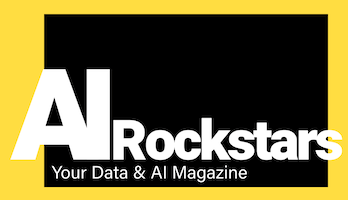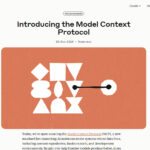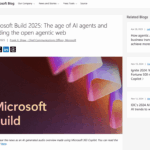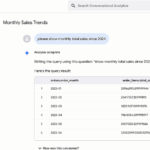Agent2Agent protocol (A2A): Google establishes new standard for AI agent communication
Google introduces the Agent2Agent (A2A) protocol, an open standard that revolutionizes collaboration between AI agents across platform and vendor boundaries. Developed in cooperation with over 50 technology partners such as Salesforce, SAP and Deloitte, A2A addresses the critical challenge of interoperability in multi-agent ecosystems and marks a fundamental shift towards vendor-independent AI environments.
The A2A protocol enables organizations to orchestrate complex workflows through autonomous agent collaboration, increasing productivity and reducing costs. The technical architecture is based on a client-server model in which agents can dynamically take on the role of client or contractor depending on the context. Using agent cards – JSON-based metadata – agents communicate their capabilities, authentication requirements and supported services.

an illustrated flow chart showing the flow of data between the remote agent and the client agent to produce secure collaboration, task and state management, user experience negotiation, and capability discovery ; How A2A works ; source: developers.googleblog.com
The task lifecycle includes negotiation and execution phases, supporting both short-lived and long-term processes. By leveraging existing web standards such as HTTP, JSON-RPC and SSE, A2A ensures compatibility with legacy systems while integrating enterprise-grade security features such as OAuth 2.0 and mutual TLS for authentication.
The protocol respects opaque execution – agents retain full control over their internal decision-making processes and only share task-specific inputs and outputs. This prevents proprietary algorithms or sensitive data from being exposed across organizational boundaries. In addition, A2A is modality agnostic and supports text, audio/video streams, forms and embedded user interfaces for different interaction requirements.
A2A forms a central part of Google’s broader AI agent ecosystem, which includes the Gemini models, the Agent Development Kit (ADK), the AI Agent Marketplace and Agentspace. By positioning A2A as the link between these layers, Google aims to establish its cloud platform as the central hub for multi-agent ecosystems.
The early partnership with infrastructure providers (MongoDB), SaaS providers (Workday) and consulting firms (Accenture) ensures the cross-industry relevance of A2A. This interoperability reduces dependency on individual vendors and accelerates the ROI of AI investments by leveraging existing cloud services.
Key facts about the protocol
- A2A was developed in collaboration with over 50 technology partners
- The protocol enables seamless communication between AI agents from different providers
- The technical basis is formed by established web standards (HTTP, JSON-RPC, SSE)
- Agent cards are used to publish capabilities and services
- A2A supports both short-lived and long-term task processes
- Enterprise-grade security functions protect proprietary algorithms and sensitive data
- Protocol is modality agnostic and supports text, audio/video and more
- Integration with Google’s broader AI ecosystem creates a complete agent stack
- A2A addresses the critical problem of interoperability in multi-agent scenarios
- The open protocol is hosted on GitHub and made available for community contributions
Source: Developers Googleblog







